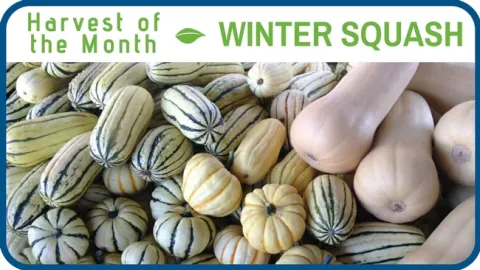
The month of January is a good time to eat winter squash, which come in different shapes, sizes, colors and flavors. Some of the most common types of winter squash include butternut squash, acorn squash and pumpkins, although there are many other varieties available. While all varieties of squash plants grow best during warmer months and won't tolerate freezing temperatures, winter squash develop hard rinds that allow the squash to be stored for months. This means the squash can be eaten into the wintertime, long after the plants that grew them are gone. Winter squash is a good source of vitamin A, vitamin C and fiber, and is a naturally sweet vegetable that can be enjoyed in many different ways. See below for healthy recipe ideas, or learn more about winter squash and view its nutrition facts at Harvest of the Month.
Recipe Ideas:
Winter Vegetables in Coconut Sauce

